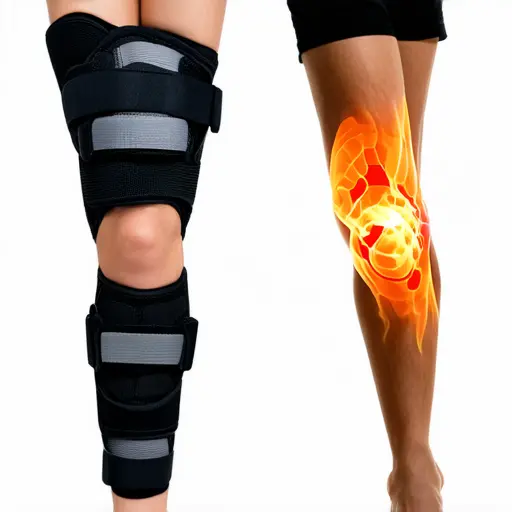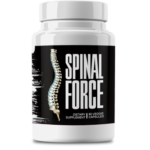This Village-Made Chinese Pain Reliever Eliminates Back And Joint Pain!
Ligament Tear in Knee Recovery: What to Expect

Ligament Tear in Knee Recovery: What to Really Expect
A knee ligament tear can stop you in your tracks—literally. Whether you're an athlete sidelined mid-game or someone who took a wrong step, that sharp pain and sudden instability are hard to ignore. The good news? Understanding what's happening in your knee and how to recover properly can make all the difference. Let's walk through the recovery journey together, from those first painful moments to getting back to your favorite activities.
What Exactly Happens When You Tear a Knee Ligament?
The Basics: Your Knee's Shock Absorbers
Think of your knee ligaments like strong rubber bands holding your bones together. When one snaps or stretches too far—whether from a sports injury, accident, or just awkward movement—you'll know it immediately. That "pop" you might hear? Not a good sign.
How Most People Tear Their Knee Ligaments
You'd be surprised how common this is. Most tears happen during:
- Sports moments: That sudden stop during basketball or awkward ski landing
- Everyday accidents: Missed steps on stairs or slippery floors
- Overdoing it: When your weekend warrior ambitions outpace your conditioning
The Usual Suspects: Meet Your Knee Ligaments
Your knee has four main stabilizers:
- ACL: The one athletes fear—goes out during sudden stops or direction changes
- MCL: Often injured by direct hits to the outer knee
- PCL: Typically damaged in car accidents when the knee hits the dashboard
- LCL: The least common, usually from blows to the inner knee
Recognizing a Ligament Tear: Don't Ignore These Signs
The Telltale Symptoms
Your knee has ways of telling you something's wrong:
- That immediate sharp pain that makes you say words you wouldn't repeat in public
- Swelling that makes your knee look like a balloon within hours
- Feeling like your knee might give out when you put weight on it
Is It Just a Sprain or Something More Serious?
Here's the quick cheat sheet:
- Sprain: Hurts but you can still walk (mostly)
- Full tear: Makes your knee feel about as stable as a chair with a broken leg
When to Actually Worry
Get to a doctor if:
- You can't put any weight on it without intense pain
- Your knee looks deformed (not just swollen)
- It feels like your knee is locking up
Getting the Right Diagnosis
What Happens During the Exam
Doctors have some uncomfortable but effective tests—like bending your knee in specific ways to check which ligament is complaining the loudest.
The Imaging Rundown
- MRI: The gold standard for seeing soft tissue damage
- X-ray: Just to rule out broken bones
- Ultrasound: Less common but sometimes used
Why Getting It Right Matters
Misdiagnosing a ligament tear is like trying to fix a flat tire by changing the oil—it won't solve your problem and might make things worse long-term.
Your Treatment Options Explained
The RICE Method (No, Not the Food)
For milder injuries, remember:
- Rest: Your knee's way of saying "I need a break"
- Ice: 20 minutes on, 20 minutes off—your new routine
- Compression: A snug (not tight!) wrap to control swelling
- Elevation: Prop it up higher than your heart
Physical Therapy: Your Secret Weapon
A good PT will help you:
- Regain movement without pain
- Strengthen the muscles around your knee
- Retrain your balance (which often suffers after injury)
The Surgery Question
You might need surgery if:
- You're young and active with a complete tear
- Multiple ligaments are damaged
- Conservative treatments aren't working
The Recovery Timeline: What to Expect When You're Healing
The Healing Phases
- First 2 weeks: All about pain and swelling control
- Weeks 2-6: Baby steps back to movement
- After 6 weeks: The long road to full strength
How Long Until You're Back to Normal?
- MCL: Could be walking normally in 1-2 months
- ACL: Buckle up for 6-12 months if surgery's involved
- PCL/LCL: Somewhere in between, depending on severity
What Affects Your Comeback Speed
Your recovery depends on:
- How well you follow your rehab plan (no cheating!)
- Your age and overall health
- How severe the injury was
Rehab Exercises That Actually Help
Simple Moves With Big Impact
- Quad sets: Flex those thigh muscles while sitting
- Leg raises: Build strength without bending your angry knee
- Hamstring curls: Because balance matters
Keeping Your Knee From Getting Stiff
Try gentle cycling or swimming—your knee will thank you for the movement without the pounding.
Rehab Mistakes That Set You Back
- Rushing back to sports (we know it's tempting)
- Skipping PT appointments (your therapist notices)
- Pushing through sharp pain (that's your knee saying "stop")
Keeping Your Knees Safe in the Future
Prevention Is Better Than Recovery
Focus on:
- Strong legs (quads, hamstrings, and glutes)
- Good balance (try standing on one leg while brushing your teeth)
- Core strength (yes, it affects your knees too)
Warm-Up Like You Mean It
Dynamic stretches before activity, static stretches after—your knees will perform better and stay happier.
Gear That Makes a Difference
Consider knee braces if you're prone to injury, and learn proper landing techniques if you play jumping sports.
Wrapping Up: Your Comeback Story
Recovering from a knee ligament tear tests your patience, but with the right approach, you can come back stronger. Listen to your body, follow your rehab plan, and don't rush the process. And remember—if something doesn't feel right, check with your doctor or physical therapist. Your future self will thank you for doing recovery right!
The Big Three Takeaways:
- Early proper treatment prevents long-term problems
- Rehab isn't optional—it's your ticket back to normal life
- Smart prevention keeps you off the injury bench
Been through a knee ligament recovery? What helped you most? Drop your tips in the comments—you might help someone else going through it now!








